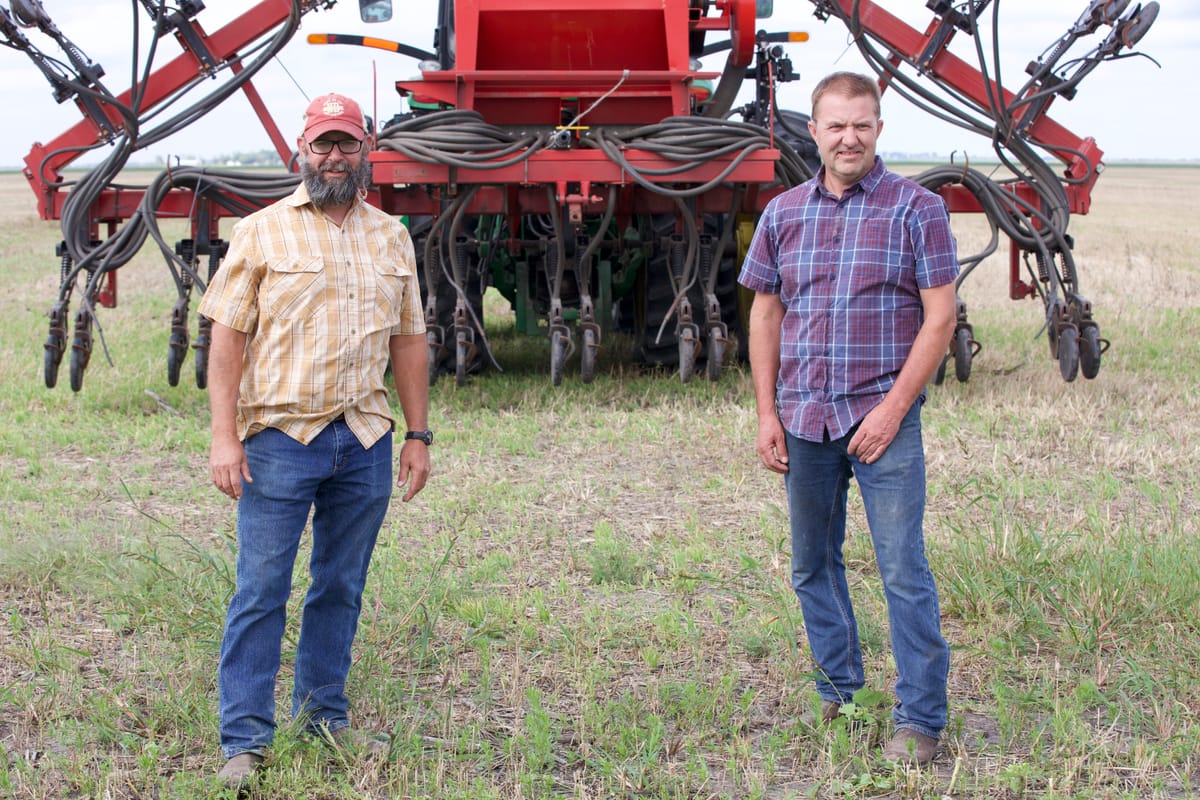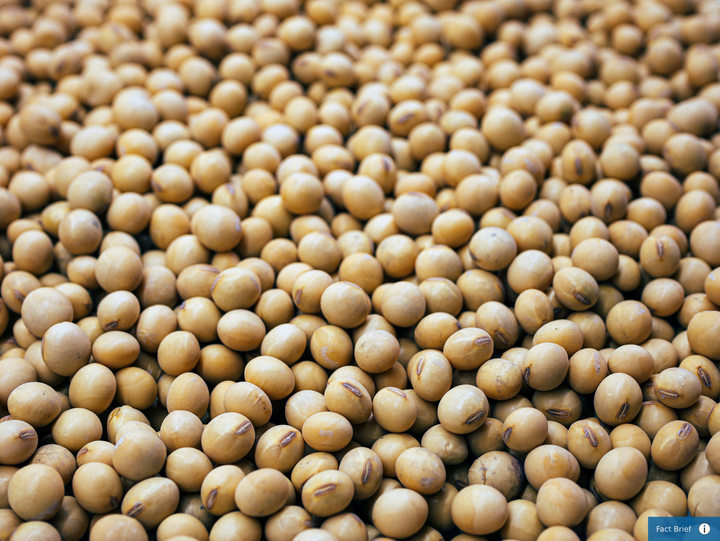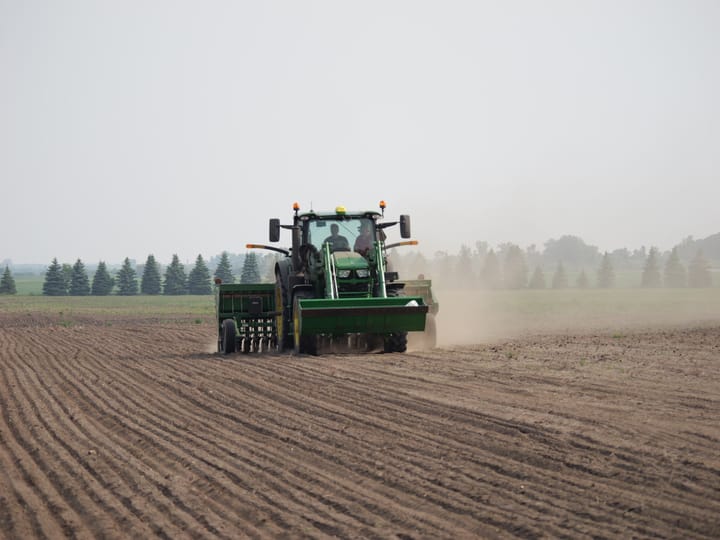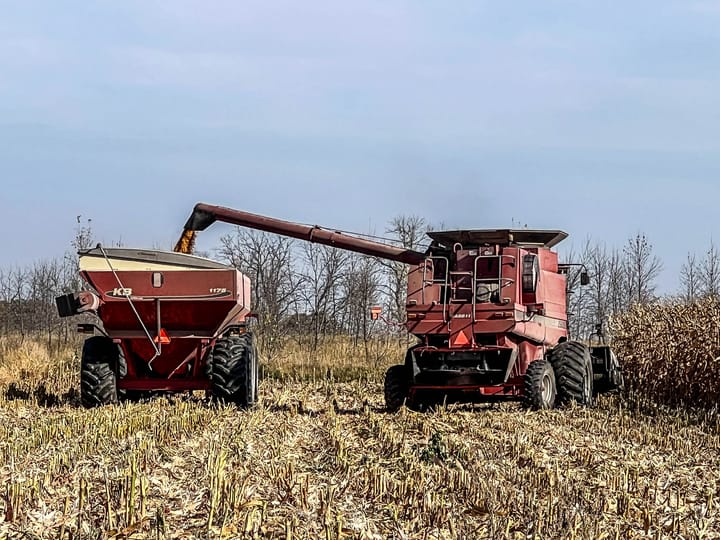Mini-doc popularity mirrors growing interest in regenerative agriculture
Two North Dakota farmers highlighted for shift to regenerative practices

A shift in consumer mindset toward foods grown with less chemicals, fertilizers and pesticides is driving greater interest in a switch to regenerative agriculture for some farmers across the country.
Two farmers attempting to make the switch to regenerative agriculture near Leonard, North Dakota in the southern Red River Valley are the focus of a mini-documentary that’s garnered nearly 600,000 views on YouTube in just the past six months.
Farmers Tyler Zimmerman and neighbor Chris Walberg turned to no-till farming several years back, but an interest in restoring soil health to an area where over 50% of the topsoil has been lost over the past 120 years led them deeper into their soil journey.
For Zimmerman and Walberg, no-till progressed to cover cropping, which then went to including cereals and specialty crops, rotating crops, and grazing livestock on cover crops, as well as experimenting with other aspects of regenerative farming, all while continuing to reduce chemical and fertilizer inputs.
“Everything just kept connecting and we kept going down that road, and pretty soon here you are doing all these different things that the conventional farmer isn’t doing,” Zimmerman said.
Zimmerman is in year ten of the switchover on his 3,000-acre farm raising corn, soybeans, sunflowers, wheat, cereal rye and millet, alfalfa, as well as oats, barley and some radish and flax in the past.
Regenerative farming aims to repair, restore and grow the biological diversity of local soils so that crops can be produced with increasingly minimal amounts of pesticides, herbicides and synthetic fertilizer inputs.
When he first started farming, “I didn’t really know how alive the soil is and the biology aspect of the soil,” Zimmerman said.
When it came to crop inputs, “Everything that we used to use is trying to kill something,” he said, “so here we’re trying to grow and build our soil and keep it alive, to in turn, to give us the nutrients and everything that it can give us.”
Having a neighbor in lifelong friend Walberg who is also making the transition helps create a powerful sharing partnership for the two farmers. It’s also been an enjoyable process, Zimmerman said.
“It’s made farming a lot more fun because we’re doing a lot of different things,” Zimmerman said. “It makes it fun because we’re doing different things and learning, we’ve got to keep on the learning side of things because every day we’re learning more.”

The viral mini-documentary is part of a series of documentaries supported by the Kiss the Ground nonprofit, which promotes regenerative agriculture and soil health as a viable solution for better health, better water quality and climate resiliency.
Through the documentaries, consumer guides and other resources, Kiss the Ground focuses on educating the public about the possibilities of regenerative agriculture.
Evan Harrison, CEO for Kiss the Ground, sees a parallel between farmers and artists. Both are always striving but never really arriving, he said, just like Zimmerman and Walberg.
“I think what we were able to bring across in the film is that ‘welcomeness’ they give off,” Harrison said.
“People might look at them and say they’re experts, but they look at it and say we’re on a journey and we’re just constantly trying to figure it out,” he said.
While statistics vary on the amount of land considered regenerative agriculture in the U.S. - figures range from around 14 million to up to 30 million acres out of the around 900 million acres of agricultural land - awareness is increasing quickly, Harrison said.
Just a year and a half ago, only around 4% of U.S. adults understood what regenerative agriculture is, according to a survey Kiss the Ground commissioned. That figure has increased to around 7% in the nonprofit’s most recent survey.
Harrison said the tipping point for a real shift will be around 15 to 20% in awareness, and once reached, could lead to a transition of around 76 million more acres to regenerative farming.
Qasim Khan, an organic cropping systems agronomist at North Dakota State University’s Carrington Research Extension Center, has also been tracking the shift in consumer demand for organic products and food produced with no pesticides.
According to the most recent data he has, around 35% of US consumers seek out products grown without pesticides.
“I think the trajectory is in that direction,” Khan said, toward more and more consumers wanting food produced through regenerative practices.
While consumers may be driving some of this change, farmers have to weigh the costs and benefits of switching over to more sustainable, regenerative farming, Khan said.
“Sometimes you’re forced to change or you willingly want to go more for sustainable or regenerative agriculture,” Khan said.
In some areas of the country, farmers have turned to regenerative practices out of necessity as chemical inputs could no longer control weeds that had become immune to them. Restoring soil health through regenerative agriculture has been the only way to turn in these cases.
Bigger changes would likely come from the next generation of farmers making a choice to move to regenerative agriculture, he said. Those who’ve been farming for 30, 40 or 50 years likely won’t change practices, but their sons and daughters might.
On July 22, Khan and his team in Carrington will host a field day with four different agronomy tours, with organic and regenerative farming among the focuses.
Walsh County Three Rivers Conservation District will also host a soil health tour on July 17, which includes a regenerative farm visit as well as a variety of soil health speakers.
Josh Anderson, Walsh County district conservation manager, said tours like this are part of cultivating a conversation about and creating greater awareness around soil health.
“We try to get demonstrations of people who are transferring to no till or minimum tillage, incorporating cover crops and a diversity of species so that there are living roots and a diverse mix of species that hopefully kind of mimics or takes inspiration from the prairie,” Anderson said.

The North Dakota News Cooperative is a nonprofit news organization providing reliable and independent reporting on issues and events that impact the lives of North Dakotans. The organization increases the public’s access to quality journalism and advances news literacy across the state. For more information about NDNC or to make a charitable contribution, please visit newscoopnd.org. Send comments, suggestions or tips to michael@newscoopnd.org. Follow us on Twitter: https://twitter.com/NDNewsCoop.



